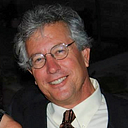SAQs for APUSH Topic 8.5 — The Culture After World War II
2 min readMar 31, 2021
Ten questions designed to help students review for the annual exam and that relate to the values, practices, traditions, and beliefs of the Greatest Generation.
- The Greatest Generation, also known as the G.I. Generation and the World War II generation, is generally defined as the people born from 1901 to 1927. The generation that came immediately after the Greatest Generation is known as the Silent Generation and it is generally defined as the people born from 1928 to 1945. What is one thing that the Silent Generation is known for?
- The generation that came after the Silent Generation is known as the Baby Boomers and it is generally defined as the people born from 1946 to 1964. What is one thing that the Baby Boom Generation is known for?
- After World War II, the Greatest Generation went back to school in record numbers. Name and briefly describe a federal law that subsidized this learning opportunity.
- After World War II, the Greatest Generation produced children at an unprecedented level. Name and briefly describe a federal law that subsidized the desire of the Greatest Generation to move into and own homes in the suburbs.
- After World War II, the Greatest Generation consisted of a relatively conservative mindset. Name and describe one fear that can be used to explain this mindset.
- After World War II, the Greatest Generation fared unusually well, economically speaking. Name and briefly describe one piece of evidence that can be used to explain this success story.
- After World War II, the economic boom that occurred fostered a sense of optimism in the Greatest Generation. What does the word “optimism” mean?
- After World War II, the Greatest Generation is often described as having a homogeneous set of values, practices, traditions, and beliefs (aka culture). Describe the culture of the Greatest Generation in terms of gender roles? Also in terms of religious beliefs and the kinds of neighborhoods they lived in (think Levittown). Also in terms of what sports they would watch, what they would do after dinner, and what they would do on weekends, other than on Sunday mornings.
- After World War II, the Greatest Generation (despite the perception of homogeneity) engaged in many significant political and moral debates that sharply divided the nation. What was one significant political question that the Greatest Generation debated after World War II? What was one significant moral question that the Greatest Generation debated after World War II?
- After World War II, the offspring of the Greatest Generation rejected many of their parent's social, economic, and political values. Click here for ten questions that relate to the values, practices, traditions, and beliefs of the offspring of the Greatest Generation.
